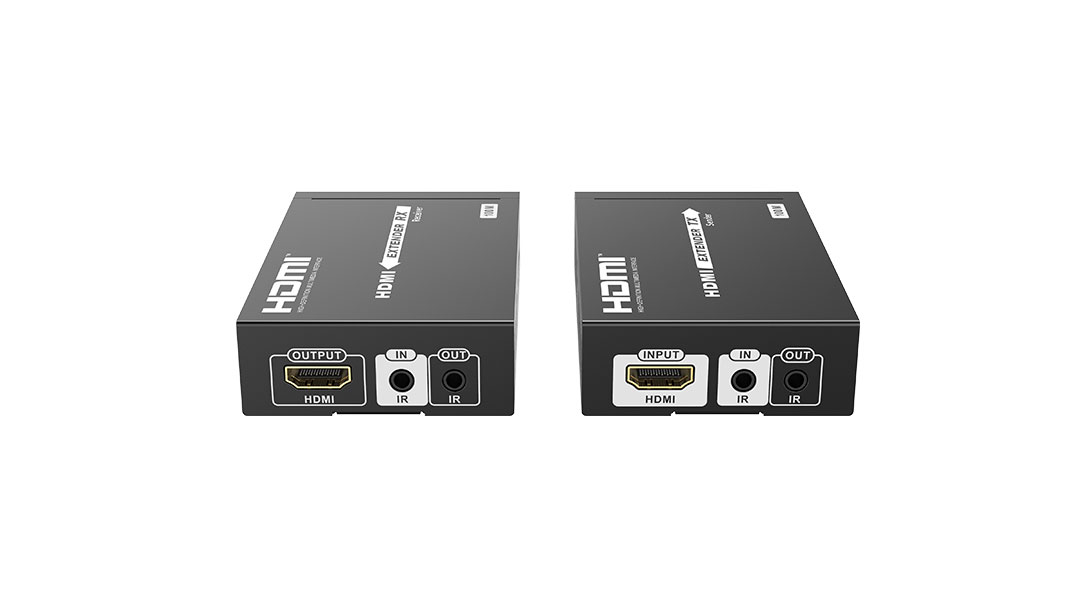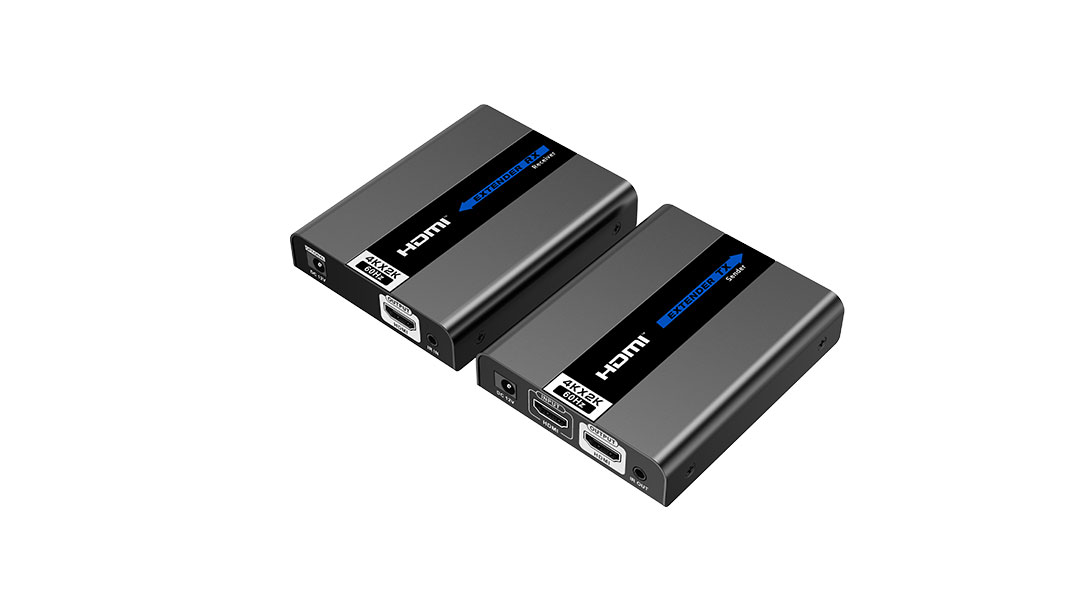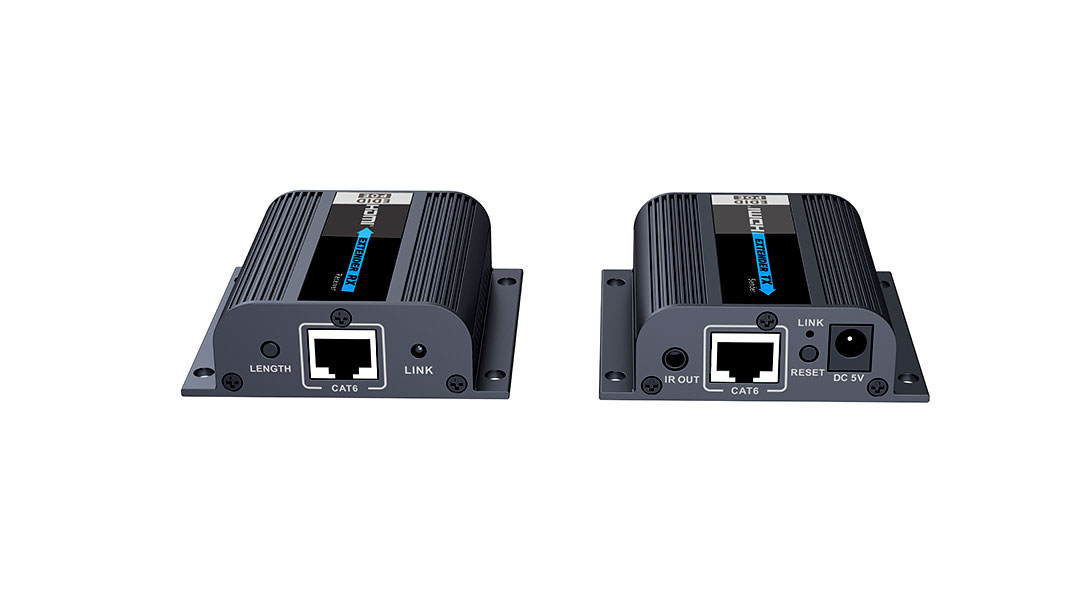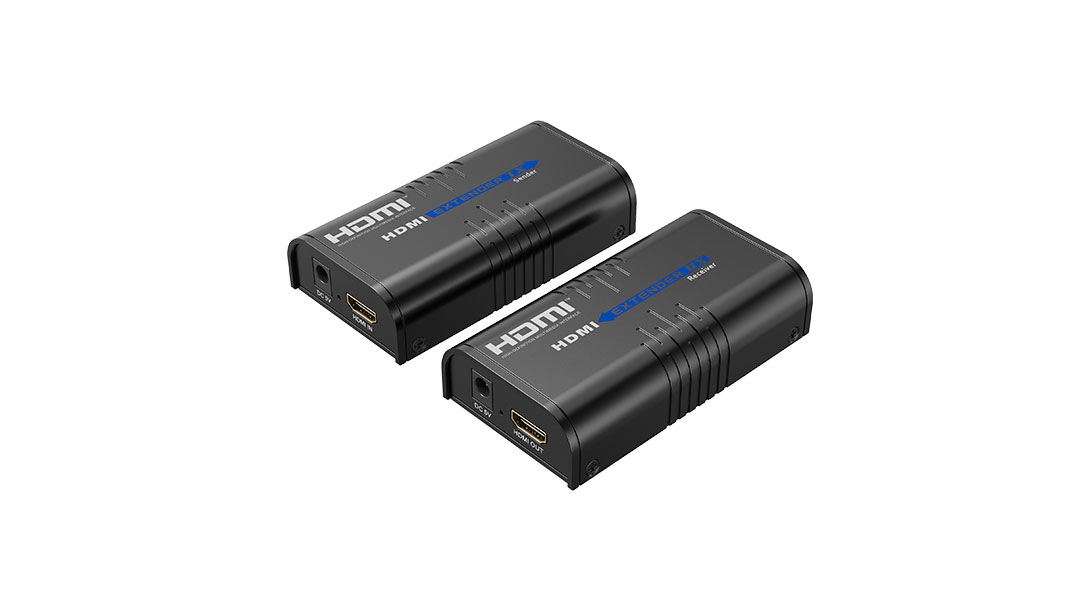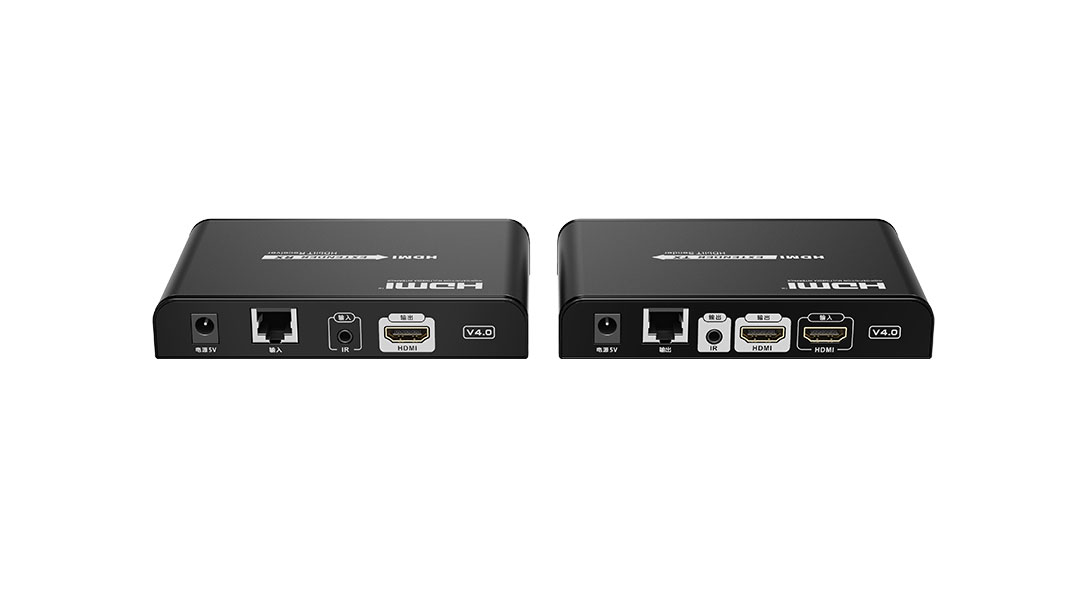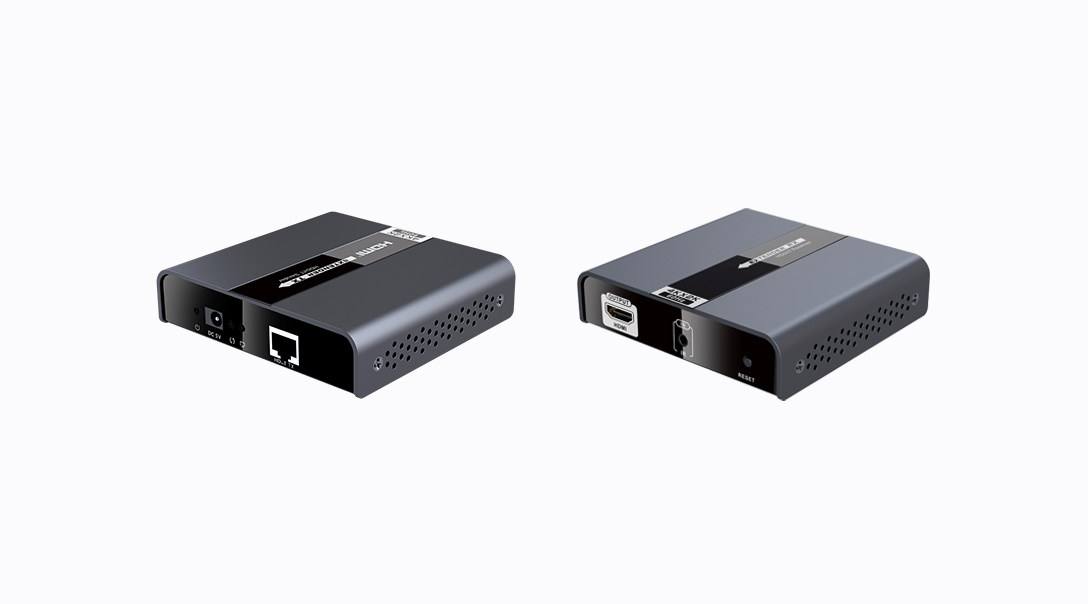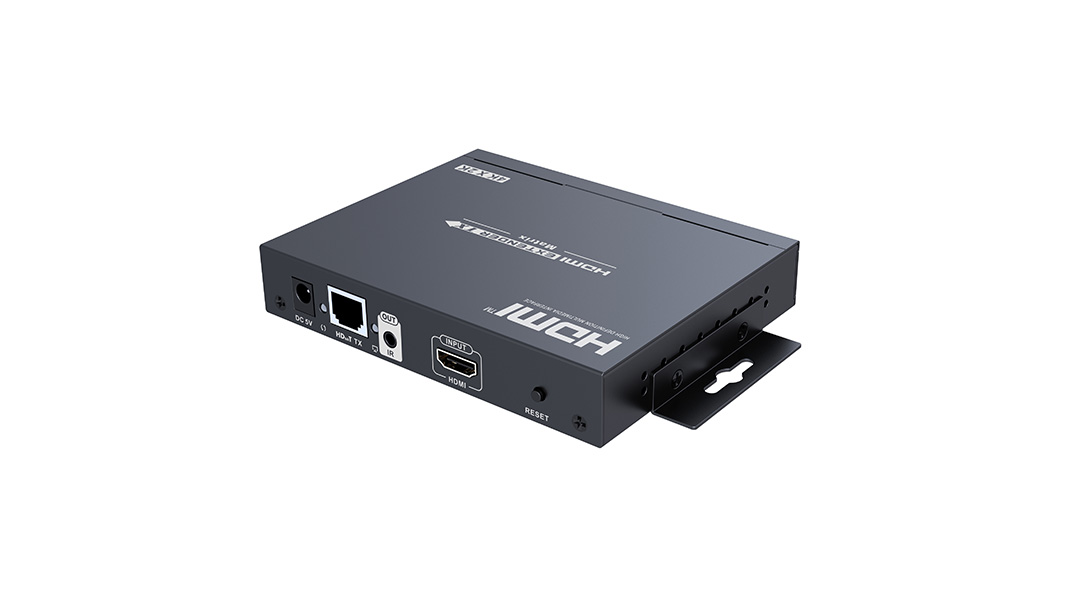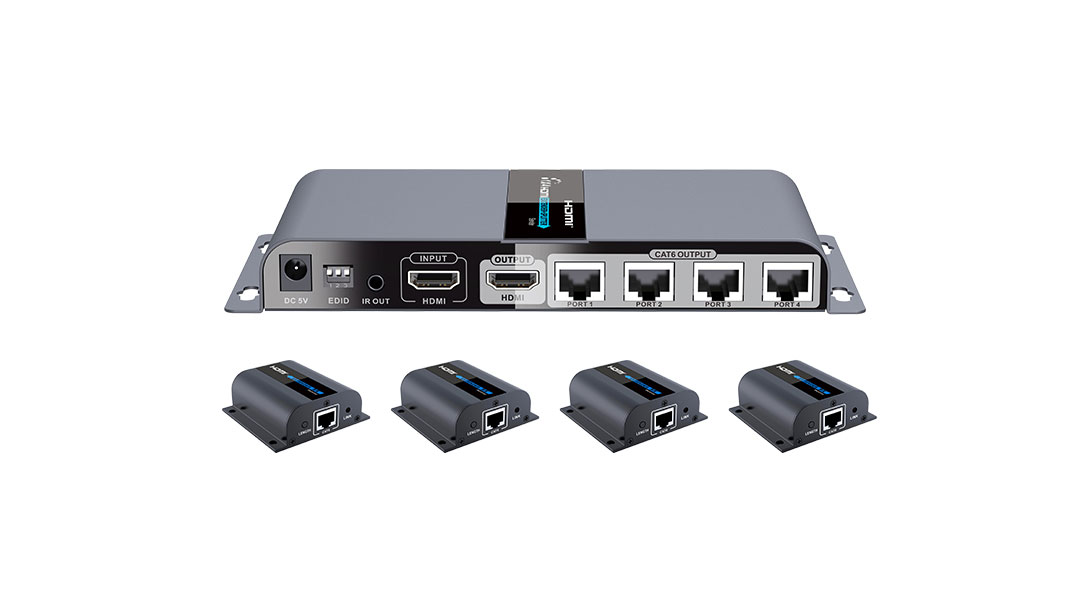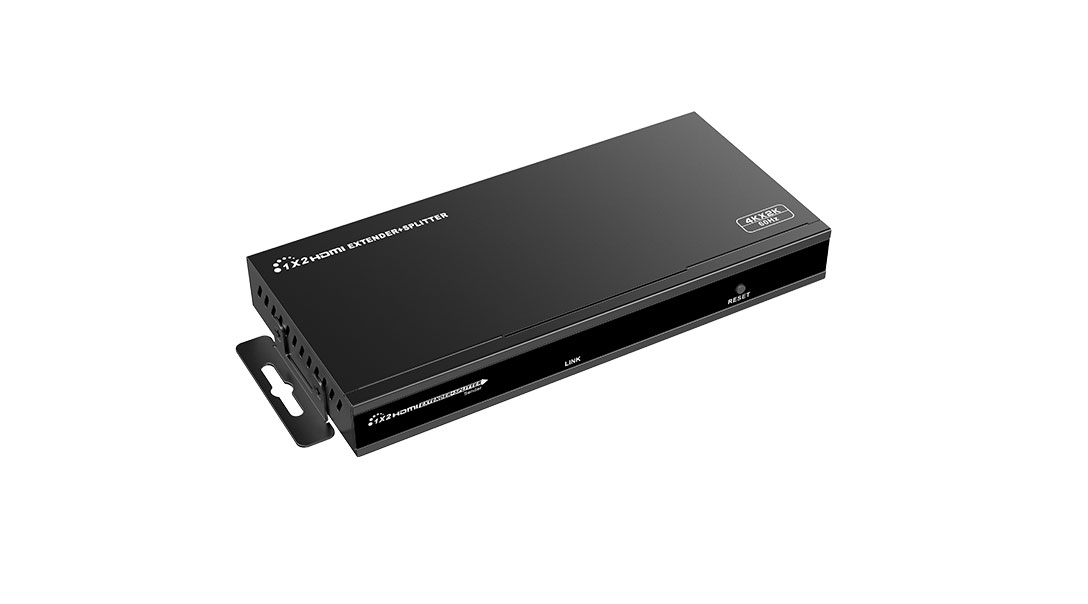



Our products are widely recognized and trusted by users and can meet continuously changing economic and social needs for 4x4 Matrix Switcher,Hdmi Splitter Matrix,4x4 Hdmi Matrix 4k,Hdmi Matrix 4x4 4k,4x4 Matrix Switch.Our tenet is "Reasonable prices, efficient production time and best service" We hope to cooperate with more customers for mutual development and benefits. The product will supply to all over the world, such asSlovakia ,Muscat ,United Arab Emirates ,Hamburg ,Zurich ,We take measure at any expense to achieve essentially the most up-to-date equipment and approaches. The packing of nominated brand is our a further distinguishing feature. The items to assure years of trouble-free service has attracted a great deal customers. The solutions are obtainable in improved designs and richer assortment, they're created scientifically of purely raw supplies. It readily available in a variety of designs and specifications for your selection. The most recent kinds are a great deal better than the preceding one particular and they are quite popular with lots of prospects.
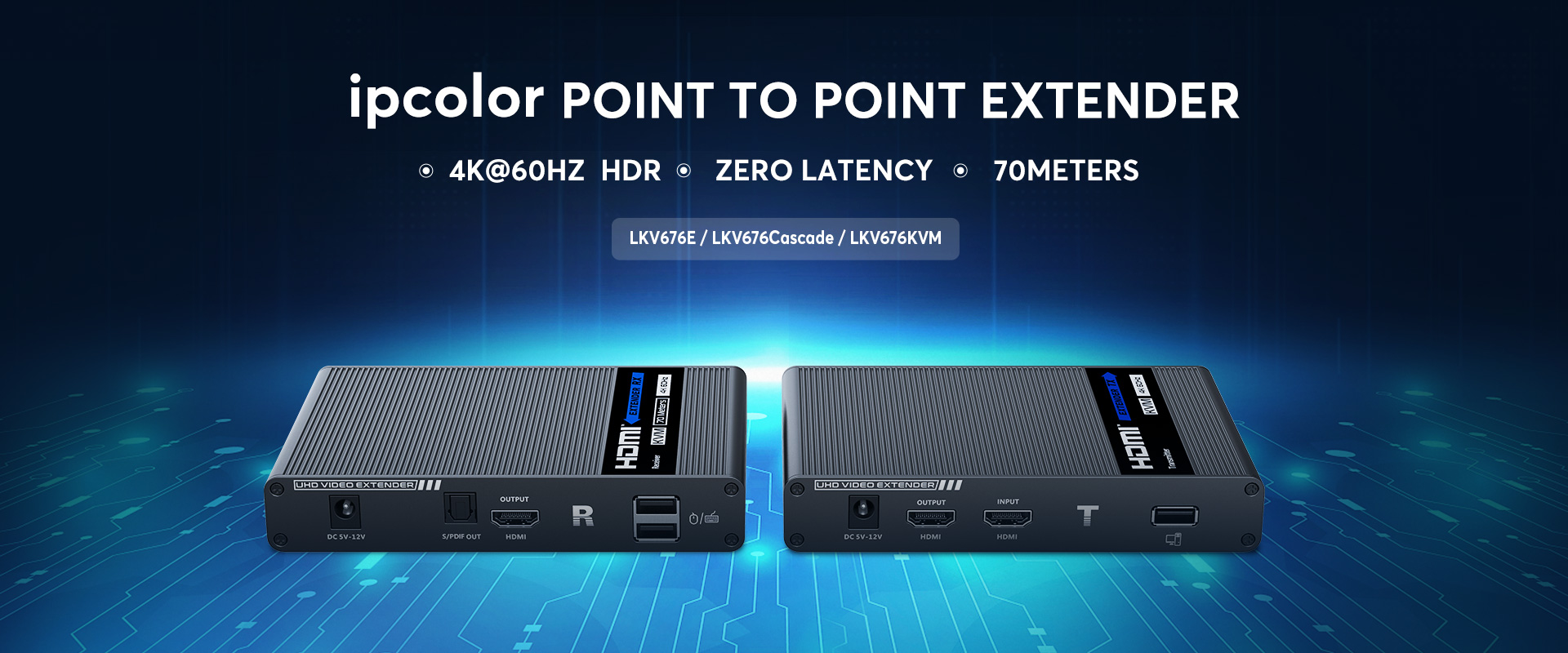
Filed under:
MiSTer FPGA project recreates classic hardware
Although I assembled it myself and all its software comes from open source DIY projects, in many respects, my MiSTer is still the most versatile computer I have. This is a deformed magic box that can change its logic to make it run as accurately as possible as countless other machines. From old arcade boards to early PCs to old game consoles, MiSTer developers are committed to transforming them into an ever-expanding hardware range.
If you have ever wanted to use computer software or hardware that is no longer sold, you may have encountered emulation before. This is a huge field that usually involves a large number of people doing a technically challenging feat: how to write software that allows one computer to run code written for another computer. However, traditional emulators can only do a lot of things. To make your current hardware run software that has never been designed to handle, there are always inherent trade-offs and complexities involved. An emulated operating system or video game usually encounters speed, latency, and errors that the original device has never encountered. So, what if there is a way to change the hardware itself?
Ok that is
. This is an open source project based on field programmable gate array (FPGA) technology, which means it utilizes hardware that can be reconfigured after the fact. Although traditional CPUs are fixed from the time of manufacture, FPGAs can be reprogrammed to make them work as if they came out of the conveyor belt with the actual silicon chips to be used.
This means that you are not tricking the processor into believing that it is something else, you are setting it up to behave this way from the beginning. In theory, the MiSTer system can run software from NES to Neo Geo, to Apple II or Acorn Archimedes, and provide responsive, almost certain and accurate performance, almost the same as what you get from actual equipment.
Of course, this is not as easy as it sounds. In order to program an FPGA to work like a computer thirty years ago, you must have a deep understanding of the original hardware. This is why MiSTer has become one of the coolest DIY projects in technology today with the knowledge of today's global developers.
FPGA is not a new technology. The two early companies in this field (sorry) are Altera (now owned by Intel) and Xilinx (now owned by AMD). Since the 1980s, the two companies have been competing for market share in programmable logic devices, mainly serving corporate customers. One of the biggest advantages of FPGAs on an industrial scale is that companies can iterate their software designs on hardware before they need to manufacture the final chip. For example, FPGAs are widely used to develop embedded systems because software and hardware can be designed at the same time.
If you have encountered Analogue's boutique console clone products, such as FPGAs, you may be familiar with FPGAs.
with
. They use an FPGA programmed in a certain way to replicate a single specific piece of hardware, so you can use the original physical cassette with it and get an experience very close to the actual console.
Compared to what you might find in commercial or enterprise applications, the MiSTer project is built on more accessible FPGA hardware. The core of the system is an FPGA board called DE10-Nano, which is produced by another Intel-owned company called Terasic, which is located in Taiwan. It was originally designed for students as a way of self-learning to use FPGAs.
DE10-Nano looks a bit like Raspberry Pi. It is a small motherboard without a shell and can be expanded. The hardware includes Altera Cyclone V with two ARM Cortex-A9 CPU cores, 1GB DDR3 SDRAM, HDMI output, microSD card slot, USB-A port and Ethernet connection. It runs a Linux-based operating system out of the box and sells for US$135, or US$99 for students.
MiSTer was inspired by MiST, an early project that used Altera FPGA boards to recreate Atari ST. But DE10-Nano is cheap, powerful and extensible, so when the development started a few years ago, project leader Alexey Melnikov used it as the basis for MiSTer. Melnikov also designed special daughter boards for MiSTer, which enhance the functions of DE10-Nano and make the finished machine more versatile. The designs are open source, so anyone can freely manufacture and sell them.
You can run MiSTer on a single DE10-Nano, but this is not recommended because only the development board supports only a few available cores. (The "core" is the re-creation of a specific console or computer designed to run on the MiSTer platform.) One upgrade that should be considered essential is the 128MB SDRAM memory stick, which provides MiSTer at an appropriate speed It has enough memory to run all the content published for the platform so far.
In addition to this, assuming you would rather not run open circuits that are exposed to these elements, you may also need a case. There are a variety of housing designs to choose from, many of which are designed to be used with other MiSTer-specific accessories that connect vertically to the DE10-Nano. For example, most cores do not require an I/O board, but it adds a VGA port and digital and analog audio output, which is useful for various settings. (Many MiSTer users prefer to connect their system to a CRT TV to take full advantage of the real output and low latency.) You can add a radiator or fan, which might be a good idea if you want to run the system. Extension of time. There is also a USB hub board, which adds seven USB-A ports.
For my setup, I ordered DE10-Nano, 128MB SDRAM memory stick, VGA I/O board with fan, USB hub board, and a chassis designed for precise hardware selection. These mainly came from different sources and took a lot of time to display. You can order DE10-Nano from countless computer retailers, but other MiSTer accessories involve entering the cottage industry of redesign and resale. Half of my parts arrived in a tattered box from Portugal, filled with shredded paper and loose bubble wrap.
MiSTer accessories are based on Melnikov's original design, but because the project is open source, many sellers can customize their own version. For example, in my case, a jumper is included, which is directly hung on the I/O board to control its lighting, while others require you to arrange the LEDs yourself. At the same time, the USB board also has a bridge leading to the DE10-Nano. The height of the bridge seems to be different from that of most other bridges, which means I have to improvise on the screw position. I did not order anything, so it took some time to figure out where to go, but in the end everything was fine. The only other thing I have to do is to buy a small hex screwdriver to fit the last screw in the box.
This is the fun of MiSTer. There is a basic specification that can solve all problems, but you still have to assemble your own FPGA computer in the end, and you can adjust the number of builds as needed.
related
After setting up the hardware, you need to install the MiSTer software. There are several ways to do this, and you need to dig deeper
And GitHub for a while, so you know what you are doing, but the method used in the end is simple-essentially, you can format the microSD card with the installer package, put it in the DE10-Nano, and then plug in the Ethernet cable and USB keyboard, turn on the system power, it will download all available kernels. Then set your SD card to directly start MiSTer OS, and then you can run another script to ensure that everything has been updated with the latest version.
The MiSTer operating system is very simple, its default background looks like a pixelated TV static image, and it has a basic menu with equidistant fonts, allowing you to choose from a list of consoles and computer cores. The first thing I want to do is load some old Game Boy Advance ROMs that I discarded ten years ago. For some reason, Nintendo did not want to sell them to Switch. (Please sell them to Nintendo's Switch.) The performance of this game is as real as I expected, except that I am watching a 4K TV instead of a small screen.
The main reason I entered MiSTer was to use a hardware-based approach to access certain parts of the computer history that I had missed, or to revisit a forgotten platform I had used. I know that computer systems like Apple II and Amiga have a big gap in my knowledge, so it's great to have a small box that can run like any of them. I also entered the MSX platform that was popular in Japan in the 1980s. My next rainy day project is to install RISC OS, which is the Acorn operating system, which is the first computer I use in a British school. (Actually, you can still
It is a pleasant surprise to license ROM copies of various versions of the operating system. )
MiSTer development is a vibrant scene.
It will be updated several times a week, including the improvements he made to the core, but there are many other people contributing to the project every day or every week. A colleague introduced to me
For example, he is Spanish and has made great progress in copying the old Capcom arcade machine board. Have
Designed to make the original PlayStation work, this marks the biggest step forward for 3D hardware on MiSTer.
FPGAs are often considered to be a panacea for perfect simulation, but it is not actually the case-at least not without a lot of effort. Any effect that runs perfectly on MiSTer or is almost imperceptible is the result of talented programmers spending a lot of time figuring out the original hardware and applying their knowledge to its kernel. Just read
Get information about the required cost from the FPGA PSX project
Run on MiSTer and assess how far they must go. The quality, accuracy, and completion status of the cores may vary, but many cores are still under active development and have made considerable progress in the past few years.
Kevin Horton, Chief Simulation Hardware Engineer
Work was carried out in 2019 to recreate Sega Genesis for the Mega Sg console. This process took him 9 months, including two and a half months to figure out the core CPU of the console. "I don't know Genesis very well, and I know almost nothing about 68000 CPU!" he said. "This is the first time I have tried these two methods. It may slow down the process because I have to learn everything on the go."
In the end, Holden verified the accuracy of the work by connecting the 68000 directly to the FPGA and comparing their performance during a week of continuous testing. It illustrates the efforts of FPGA enthusiasts in pursuit of the most accurate results, but what makes MiSTer unique is that it is largely the work of amateurs. No one pays any salary to gradually adjust the performance of the arcade version
, And this is where Tejada directs the passion.
MiSTer is an important project because it talks about the concept of protection, which is often overlooked by the technology industry. The project makes an argument that the way we run software is as important as its content. Yes, you can port or emulate or redistribute software to run on modern hardware, but there is always a compromise in the underlying code that moves the pixel to your eyes.
Of course, this sounds like a niche market to those who are satisfied with simulation software that can run in a browser.
. I myself am often one of them-simulation can be great, and it's hard to go beyond convenience. However, the MiSTer project has always been an incredible effort. I will never miss the technical knowledge that MiSTer developers have, but I am grateful for their efforts. Once you have built your own system, it's hard not to feel the work involved; MiSTer is a never-ending pursuit of perfection, and there are some wonderful discoveries about it.
Product reviews, transactions and latest technology news
.
. Evil problem solver. Total number of writers.
. Enthusiastic player. Twitter's buff.
Bestgamingpro is made by
Necessary cookies are absolutely essential for the normal operation of the website. This category only contains cookies that ensure the basic functions and security features of the website. These cookies do not store any personal information.
Any cookies that are not particularly necessary for the normal operation of the website. These cookies are specifically used to collect user personal data through analysis, advertising and other embedded content, and are called unnecessary cookies. You must obtain user consent before running these cookies on your website.
Freelance writer,
Today's best technology deal
Selected by TechHive editors
Special offer for quality products
Selected by Techconnect editors
A soundbar with one or several HDMI inputs replaces an A/V receiver with six or more HDMI inputs, which could have simplified our home entertainment system, but many of us find that we have too many video sources- Set-top boxes, streaming media, game consoles, Blu-ray players, etc., and there is not enough HDMI input to handle all content. solution? HDMI switcher and audio extractor. We recently discovered a device sold under two brands: J-Tech Digital and Monoprice.
Obviously, neither J-Tech nor Monoprice
These devices, but buy them from other manufacturers because they are the same except for the label. We conducted a comprehensive test on J-Tech Digital JTECH-SWE41 and Monoprice Blackbird 4K 4x1 HDMI switch (P/N 39666) and found that they all have the stable performance of 4 HDMI inputs and 1 HDMI output. We list J-Tech as the title because at the time of writing, it sells for $25 less than Monoprice’s device.
. Since they are essentially the same device, they will be mentioned in the singular in this article.
When comparing the metal-clad Monoprice Blackbird 4K and J-Tech Digital switch boxes, their common lineage is obvious.
With complex processing skills and ARC (audio return channel) support, this switch box can help you consolidate gears, cable lines and connections. Although ultra-thin, measuring 7.1 x 3.3 x 0.5 inches (WxDxH), the power switch has a front panel display that provides precise control buttons and a less bright green LED indicator. The HDMI input on the back allows you to connect up to four 4K or 2K video source devices.
Then, the signal source selected using the front button will be output to the single HDMI-ARC output of the switcher, and output to one of the HDMI inputs of the TV, sound bar or A/V receiver, while the image or sound quality used will not be obvious decline.
establish connection.
This powerful mite provides the current top specifications, can process and push clear and sharp signals up to 4K resolution at a 60Hz refresh rate (so, it may not be the best choice).
, It supports up to 120Hz refresh rate. It also does not support FreeSync or G-Sync. Otherwise, the switch will comply with the HDMI 2.0a standard and HDCP 2.2 digital copy protection standard, which are necessary to enhance 4K images through high dynamic range processing such as HDR10 and Dolby Vision. When I plug in the power, these effects are very impressive. Amazed
The media stream is transmitted to switch input 4. I realized one of the most realistic aquariums on my 4K LG OLED, which is a screen saver. Only when the Dolby Vision logo floats quickly in the corner, can it release its true nature.
The front label of Blackbird's LED and hard button functions make it more useful when operating the device from the front. (J-Tech applied its label on the top.)
In terms of audio, high-quality audio tracks encoded with 2.1-channel, 5.1-channel and 7.1-channel PCM, Dolby TrueHD, Dolby Atmos and DTS-HD Master Audio are delivered to the HDMI output of the switch box unimpeded like J. hole. The digital technology engineer responsible for quality control testified at the brand's headquarters in Sugarland, Texas.
But wait, there is more. The addition of an audio signal extractor makes this difficult box even more useful-it is also essential for TV viewers who pair it with a high-quality (but short input) display and soundbar.
This is how it is combined. Connect the four most important devices to the switch: set-top box, media streamer, game console (or laptop) and Blu-ray player. Next, connect the HDMI output of the switch to the HDMI input of the TV (the one labeled HDMI ARC) (if available). Alternatively, you can plug the cable into the HDMI port on the soundbar or A/V receiver, which will amplify the audio content and send it to the speakers, and pass the video signal to the TV.
Similarly, the location of the input tag makes it easier for you to use Monoprice's HDMI switcher version when facing the device, and J-Tech's approach is better if you watch from above.
If your soundbar or receiver does not support HDMI, you can take advantage of the high-quality audio extraction circuit of this switcher. Insert a 3.5 mm terminated analog audio cable or optical digital (Toslink) cable into the dual-function audio output of the box, and then connect the other end of the cable to the corresponding input on the sound bar or receiver.
Yes, you will degrade in stereo or surround sound processing because the analog connection is only stereo and Toslink cannot provide the bandwidth required by Dolby TrueHD and other lossless home theater codecs. However, when I used the Toslink connection with Sonos Playbar and Bose Soundbar 500 (both paired with their respective wireless subwoofers), the sound produced proved to be very powerful, delicate and reasonably synchronized.
For me, the function of completing the transaction on this particular switch box is its smarter infrared remote control setting, which eliminates the annoyance of users and increases flexibility when integrating it into an entertainment center.
The remote control is specially made and easy to use even in the dark.
Any value-for-money HDMI switcher will enhance its front panel operation buttons through a wireless remote control, and install an IR signal receiver on its front. I have tried seven or eight other switchers, but their wireless control is often unreliable. You must sit directly in front of the distribution box, and the distribution box itself cannot be blocked by doors or any other equipment. Most of their remote controllers have weak signal transmitters, and their infrared receivers usually have a narrow field of view-no more than 30 degrees off the axis, and they are expected to work properly.
I have no such complaints about this box. Instead of placing the IR signal receiver on the front panel, it is better to tie it to a 5-foot cable that plugs into the back. You can place the box wherever you want, and use a little double-sided tape (included) to install the receiver in any exposed location that the cable can reach. If the included cable is not long enough, you can plug it into the extension. I found a
The price is about $9. It may add a one-millisecond delay to the input switching process of 3 to 5 seconds. The cable lengths provided by the manufacturer are 6 feet, 25 feet, 50 feet or even 75 feet, but I did not test them.
Both J-Tech Digital and Monoprice bundle the same simple but easy-to-use remote control with the box. The HDMI input button is located at the four corners of the square, and the selection button is located at the center. This makes the remote control easy to use even in the dark. Press the red ARC button at the top right of the remote control, and the audio content from the smart TV's tuner, onboard media streamer or any other HDMI source will be sent down from the HDMI cable plugged into its HDMI ARC port back to the switch box. From there the sound reaches your soundbar or A/V receiver. It's almost like there is a fifth HDMI input on the switch.
The infrared signal receiver can be placed up to 5 feet away from the distribution box, or even further when the extension cable is inserted.
Setting tips: If you have never used the ARC function of the TV, you may leave the factory in a disabled state. Go to the audio settings of the TV and activate it. When you are there, try to activate its CEC (Consumer Electronics Control) function, which can
Then let you use a remote control to control all devices connected to and passing through the switch box.
According to Monoprice technical support, if you want to get more control, please use the RS-232 port of this switch box for custom integrated operation and compatibility with the programmable Harmony remote control "available now or coming soon".
But I don't have much confidence in the automatic input shifting of this device (most HDMI switches tout a feature) because I find it unreliable. In theory, whenever you turn on the power of another connected device, the switch box will sense and automatically change the HDMI source. Gamers say that when they shift their attention from one connected console (or computer) to another console (or computer), it works well, but when I turn on the DirecTV satellite TV receiver or Blu-ray player, It cannot wake up and respond, possibly because the switcher also received conflicting messages from the connected streaming media box. Even in standby mode, the latter always
, Download the content and publish a screen saver image.
To be honest, the HDMI switch box moved south in a few months or years, partially or completely failed, so it has a good reputation. The cottage industry of the Chinese supplier has solved these problems with good intentions, but has insufficient experience. Evolving standards and manufacturers will take different approaches when implementing them, making their job more difficult. I put it there because I cannot guarantee how long the current selection of the best HDMI switch box will last, nor can it guarantee that it will work with all the video products you may want to connect.
Having said that, I have successfully combined J-Tech and Monoprice devices with older Panasonic and Pioneer plasma TVs, the old but most popular Philips LCD TV with Ambilight function (look it up), and the very good 4K Epson Home Cinema 4000 is paired. Video projector. I also tried various streaming media boxes (Amazon Fire TV, Apple TV, Roku), disc players, DirecTV and two video game systems (PlayStation 4 and Nintendo Switch, the latter is present on other switches I have used Problems tried). Finally, I tried to test them with Yamaha, Sony and Bose audio systems that support 4K.
Your settings and experience may still vary. Marathon gamers may heat these things to the edge and should connect their systems directly to the monitor. Also, don’t forget to use a certified premium high-speed HDMI cable
, Because the functions and stability of these switches only depend on their weakest links. If you encounter purple images again and again, you can solve the HDMI secure handshake that caused this problem by simply moving the input again.
On the bright side, I have a different
For a year and a half, its operation is impeccable, so I have full confidence in the brand. For its part, Monoprice usually chooses its suppliers wisely and has a good reputation for quality control. Both brands have operations in the United States, including technical support, and both companies provide at least one year's warranty for these devices-if you register for purchase immediately, it will be 18 months from J-Tech's warranty.
You can call it J-Tech Digital or Monoprice Blackbird... Regardless of the name used, this is an excellent four-input/single-output HDMI switcher for entertainment centers.
TechHive can help you find the best technical option. We guide you to find products you like and show you how to make the most of them.
Visit other IDG websites:
The new and more powerful ATEM Mini model includes 8 inputs, 6 DVEs, 4 chroma keyers, 16 multi-views, 2 downstream keyers, 2 media players and more!
ATEM Mini Extreme (Photo: Business Wire)
Fremont, California-((
) -Blackmagic Design today announced the launch of ATEM Mini Extreme, which is a new large model of our ATEM Mini live production switcher. This new model is our most advanced 1 M/E switcher, with 8 inputs, 4 ATEM advanced chroma keyers, a total of 6 independent DVEs, 2 media players, 2 downstream keyers, 16 multi-views, 2 USB connections and multiple HDMI auxiliary outputs. There is also a new ATEM Mini Extreme ISO model, which includes all these powerful features and a more powerful recording engine that can record all 8 inputs, and the program can record a total of 9 recording streams. Both new models include a broadcast-quality streaming engine for real-time streaming to YouTube, Facebook, Twitter, etc.
Blackmagic Design global distributors can purchase ATEM Mini Extreme and ATEM Mini Extreme ISO immediately for US$995.
With the help of the ATEM Mini switcher, you can easily create professional multi-camera products for real-time streaming to YouTube using Skype or Zoom and innovative business presentations. By simply connecting ATEM Mini, customers can switch up to 8 real-time video inputs to obtain images with significantly improved quality. Or connect to a computer used for PowerPoint slides or game consoles. The built-in DVE provides exciting picture-in-picture effects, which is very suitable for narration.
There are also plenty of video effects. All ATEM Mini models have USB, which acts like a webcam, so customers can use any streaming software, while ATEM Mini Pro and ATEM Mini Extreme models can add real-time streaming and recording functions to the USB disk. There is also an HDMI output for the projector. The microphone input allows high-quality desktop and lapel microphones for interviews and presentations.
The compact all-in-one design of ATEM Mini includes both the control panel and the connector. The front panel includes easy-to-use buttons for selecting signal sources, video effects and transitions. The source button is large, so you can use it by feeling to allow the presenter to switch. Customers can even get buttons for audio mixing. On the ATEM Mini Pro and Extreme models, customers can also get buttons for recording and streaming media control, as well as output selection buttons that allow customers to change the video output between cameras, programs, and multi-views. On the back panel there is an HDMI connection for a camera or computer, additional microphone input, USB for webcam output, and HDMI "auxiliary" output for program video.
The ATEM Mini Pro and ATEM Mini Extreme models have a built-in hardware streaming engine that can be used for real-time streaming via their Ethernet connection. This means that customers can broadcast live to YouTube, Facebook, and Twitch with higher quality without losing frames and simpler settings. Just select the streaming service and enter the streaming key. There is a palette for flow settings in the ATEM software control, and the flow status is also displayed in the multi-view. The streaming status is easy to understand because the data rate indicator shows the Internet speed required by the video format that the user is using. If the user is considered from a technical point of view, the customer can update the stream configuration file in the XML settings file to load the new service.
If users make live productions on site, ATEM Mini Pro and Extreme models support connecting Apple or Android phones to USB ports to use mobile data. This is also a good backup for the main Ethernet connection. The phone sharing function can be used with the latest high-speed 5G phones and the more common 4G phones. The ATEM switcher will automatically detect when the phone is connected and switch its internet connection to use it without changing the settings. Once connected, the phone will be powered through the USB port, so it can still be charged through the switcher. Through the use of phone sharing and mobile data, ATEM Mini Pro and ATEM Mini Extreme become the perfect mobile production solution.
ATEM Mini Pro and Extreme models also support recording their streaming data directly to a USB flash drive. This means that customers can get very long recordings in the same H.264 video file of the streamed AAC audio, so customers can directly upload it to any online video website, such as YouTube or Vimeo. You can also record to multiple disks through a USB hub or Blackmagic MultiDock, so when the disk is full, you can continue to the second disk for uninterrupted recording. Record setting and disk selection are set in the ATEM software control, and there is a record status view in the built-in multi-view.
The ATEM Mini Pro ISO and Extreme ISO models allow customers to edit live events because they can record multiple video streams at the same time, including a pure feed of all inputs and programs. The used media pool image is also saved with the video file. Video files contain metadata tags, such as synchronized timecode and camera number. Imagine re-editing their programs with new color levels, effects and graphics. Even all audio sources are recorded, so customers can mix their audio professionally.
The ISO model also saves DaVinci Resolve project files, so customers can open their real-time production as video editing with just one click. All cut, dissolve and media library graphics will be loaded. This means that customers can fine-tune editing points and even completely replace shots. DaVinci Resolve Sync Bin allows customers to select new lenses through multiple views, so it is very easy to use. Customers can even relink to Blackmagic RAW camera files to add professional color correction and retouching to Ultra HD.
Through two independent 3.5mm stereo audio inputs, customers can connect desktop and lapel microphones. With 2 additional stereo audio inputs, customers can ensure that both the host and guest have a lapel microphone during the interview. In addition, all models are equipped with a Fairlight audio mixer with all HDMI inputs, and both microphone inputs are connected to the audio mixer, so customers can mix live from all audio sources. ATEM Mini Extreme also adds headphone output.
Each HDMI input has its own dedicated standard converter. This means that ATEM Mini will automatically convert 1080p, 1080i and 720p signal sources to switcher video standards. HDMI output is a true "auxiliary" output, so customers can cleanly switch each HDMI input to output. In addition, the ATEM Mini Extreme model supports 2 low-latency direct loops. On the more powerful ATEM Mini Pro and ATEM Mini Extreme models, HDMI output can be selected to display a full multi-view.
The ATEM Software Control application releases the hidden functions of the ATEM Mini and allows access to all functions in the switcher. ATEM Software Control has a visual switcher user interface with a parameter palette for quick adjustments. Although the customer can usually connect via USB, if the customer uses an Ethernet connection, multiple users can be connected to the ATEM Mini using separate copies of the ATEM software control on different computers. Customers can even save the switcher status as an XML file. If the customer needs to edit the playback, the customer can even control the HyperDeck disk recorder via Ethernet.
The built-in "media library" can load up to 20 individual broadcast quality RGBA graphics for titles, openings and logos. Customers can even use still frames for complex effects, such as graphic wipes. You can load graphics through the ATEM software control, or you can use the ATEM Photoshop plug-in to download graphics directly from Photoshop.
The ATEM Mini Extreme model includes 4 upstream chroma keyers, which allows customers to build exciting virtual sets. With 4 independent chroma keyers, customers can get a keyer for each camera, so customers can build a virtual device for up to 4 cameras. With ATEM Mini Extreme, customers have 8 inputs, 4 of which are used for cameras, and the other 4 can be connected to a virtual computer to render the background. Or customers do not need to move their cameras, customers can make a fixed camera virtual set by loading pre-rendered still image backgrounds from media players and media pools. Customers can set up macros to change the camera and load the correct background into the media player. Even use DeckLink Quad HDMI and real-time virtual setting software.
In addition to the 2 independent DVEs in the ATEM Mini Extreme model, there is also a powerful SuperSource multi-layer processor with 4 additional DVE layers and a background layer, all of which appear as additional input sources for ATEM Mini Extreme. Any ATEM Mini Extreme video input can be used for each SuperSource DVE, and then layer them all together on the custom background of the media pool. SuperSource is very suitable for multi-picture-in-picture display with interviewees, because customers can set the effect before the broadcast effect, while still leaving the two main DVEs for other tasks. SuperSource is like a built-in multi-layer VFX switcher.
When multiple cameras are used for large-scale live performances, it is very useful to watch all their video sources on the same monitor at the same time. The ATEM Mini Pro and ATEM Mini Extreme models have professional multi-view functions, allowing customers to watch all video inputs, previews and programs on one HDMI TV or monitor. Each camera view includes prompt indicators so that customers know when each source is on the air, and each view also has a custom label and audio meter. In addition, the ATEM Mini Extreme model allows customers to choose up to 16 custom views. Multiview even includes recording, streaming and audio mixer status.
ATEM Streaming Bridge is a video converter that enables customers to receive H.264 streams from any ATEM Mini Pro or ATEM Mini Extreme and convert them back to SDI and HDMI video. This means that customers can send video to a remote location around their local Ethernet or via the global Internet. This is possible because it uses the advanced H.264 codec to achieve higher quality at a very low data rate. Setup is very easy, because the ATEM software utility can create a setup file, which the customer can send to the remote studio via email.
"
Grant Petty, CEO of Blackmagic Design, said: "These two new models of ATEM Mini have greatly increased creative features and are now our most powerful 1 M/E switcher!"
As our ATEM Mini customers really push the advantages of live production, we feel that they are innovating in new and exciting ways and inventing new workflows that we have never seen before. Therefore, we believe that it is very important to build a new ATEM Mini model that will have all the functions far beyond what is now available, so our customers can continue to use these new workflows to innovate. These new models are large, powerful, and the price is still unbelievable.
For product photos of ATEM Mini Extreme and ATEM Mini Extreme ISO and all other Blackmagic Design products, please visit:
.
Blackmagic Design has created the world’s highest quality video editing products, digital cinema cameras, color correctors, video converters, video monitors, routers, live production switchers, disk recorders, waveform monitors, and real-time film scanners. In the feature film, post-production and television broadcasting industries. Blackmagic Design’s DeckLink capture card revolutionized quality and affordability in post-production, and the company’s Emmy™ award-winning Da Vinci color correction product has dominated TV and film since 1984 industry.
Blackmagic Design continues to make breakthrough innovations, including 6G-SDI and 12G-SDI products, as well as stereoscopic 3D and Ultra HD workflows. Blackmagic Design was founded by the world's leading post-production editors and engineers, with offices in the United States, United Kingdom, Japan, Singapore and Australia. For more information, please visit
Terry Frechette
+1 408 954 0500 ext. 321




































